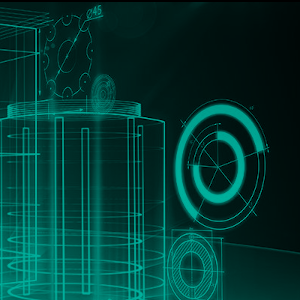Centralized Logs Aggregation
Consolidate all your logs in one place, access them through a web interface, and control their access according to your organizations’ policies.
By 2020, according to Cisco, 93% of workloads will be based in the cloud. This is easy to believe when you consider the number of companies moving to the cloud every day. Unfortunately, these migrations do not always go smoothly. There is an increased risk of data loss during migration, as well as the risk of misconfigurations that could lead to data leakage.
To minimize these risks, it is important to take security measures at all stages of the migration. Tenendo offers cloud migration support services and provides advice on secure cloud migration.
In a few cloud migration steps, experts from Tenendo will help you choose a migration strategy, plan it, support its implementation, and analyze the results:
Public – resources are owned and managed by a third-party cloud service provider. Hardware, storage, and network devices are shared with other customers and all data is accessed through an Internet connection.
Private – resources are either owned and maintained by you or by a third-party. Resources are not shared with other cloud customers and may be stored on-premises or off-site. Connectivity depends on location.
Hybrid – a combination of public and private cloud resources.
Rehosting (aka Lift and Shift) – the simplest and fastest way to move to the cloud. Data and applications are moved “as is” to the cloud environment. Rehosting is often used as an initial step towards re-platforming.
Re-platforming – requires modifying parts of applications or entire applications to fit cloud infrastructure. Replatforming enables you to optimize applications for the cloud but requires expertise in application architecture and source code.
Refactoring – involves redesigning applications to be cloud-native. Refactoring grants full cloud benefits of flexibility and scalability but requires significant programming expertise and time.
It is also possible for businesses to use third-party services as part of their cloud migration strategy. These services can be fully managed, with the third-party service handling refactoring or re-platforming.
Data migration staging can improve security by allowing your team to develop familiarity with the cloud. By starting with low–priority data, you can unload some storage at a controlled risk. You can check your configuration and identify any bugs or security gaps before transferring higher priority data or sensitive data.
When migrating to the cloud, you need to know what regulatory requirements, if any, apply to your data. This is especially important if you are part of a highly regulated industry, like healthcare, commerce, or payment services. You should determine how to meet requirements for storage, encryption, and backup, as well as transfer.
Many providers have compliance certifications for the most common regulations, such as HIPAA, PCI DSS, and GDPR. Even with these certifications, you might need to remove or render irretrievable personally identifiable information before you migrate.
Some regulations may require that you keep data on-site only. While cloud providers have tools to help you meet compliance, our experts will help you to validate if compliance is met.
When migrating to the cloud, data needs to be encrypted both at rest and in transit. Data is most vulnerable when exposed to the Internet, so we together make sure to use secure transport protocols during any data transfer and strong encryption algorithms with associated key management processes during any data storage.
You may also consider transferring data via an appliance, either available through your provider or a third party. If you select this option, we will help you to ensure that data is encrypted before it leaves your facility. In general, when transferring data, you should encrypt your storage device before transferring data onto it.
Cloud connectivity can mean an increase in opportunity for attacks as well as an increase in speed and number. We will prepare you to account for these threats, as well as continue to protect your existing systems.
The security of your migration will depend on the type of cloud you choose, the provider, and the specific steps you take. Tenendo can help you integrate security into your migration strategy, control, and monitor post-migration systems to ensure the safety of your data.
We will use the best practices established by suppliers, practices based on our own experience, and that of other clients. Taking a little time to consider security issues ahead of time will save you time, effort, and build customer confidence.
We specialize in creating reliable, fail-safe cloud environments, and building a smooth cloud migration process in a compliant manner by considering business requirements and cloud benefits and constraints. This includes infrastructure capacity planning, potential workload, monitoring overhead estimation, the configuration of microservices, the scheme of their interaction, etc. to exclude potential points of failure. Reach out to our experts in cloud computing technologies for the advice!

Consolidate all your logs in one place, access them through a web interface, and control their access according to your organizations’ policies.

Infrastructure as code (IaC) is a form of configuration management that codifies an organization’s infrastructure resources into text files. Infrastructure automation is required to accelerate DevOps processes.

Configuration management is a business value-oriented job that uses an operational management process and implements tools to support its mission.